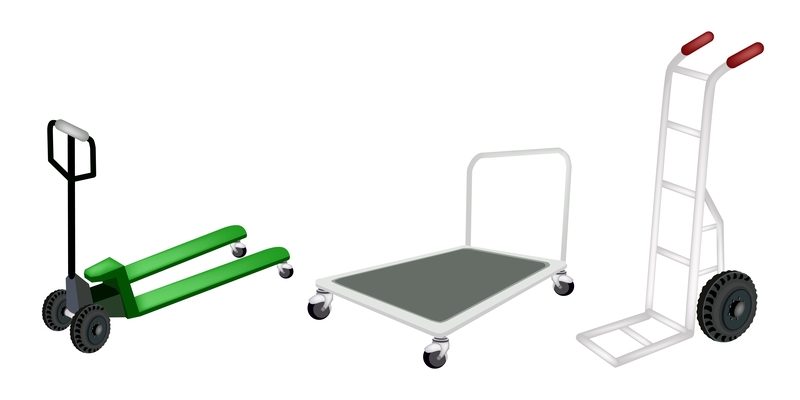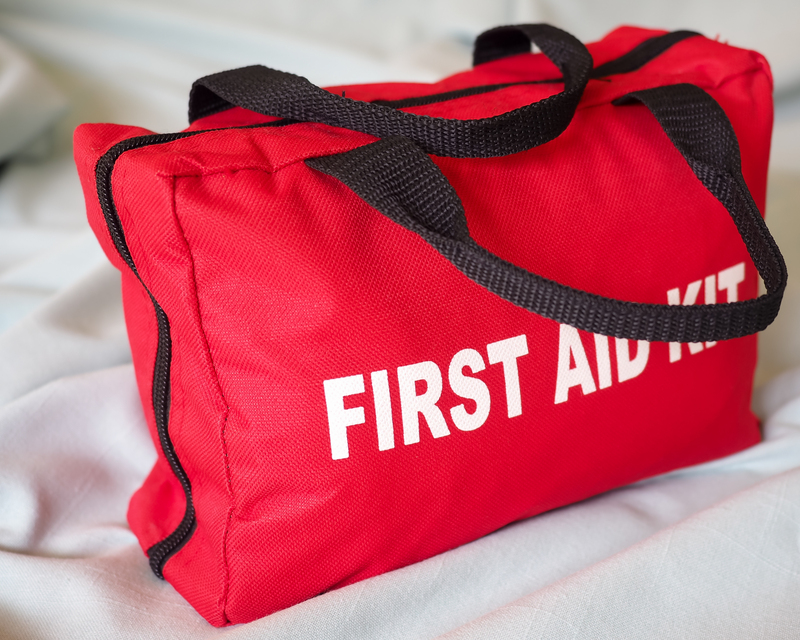Expert Advice on Transporting Your Bed and Mattress
Posted on 14/06/2025
Expert Advice on Transporting Your Bed and Mattress
Moving homes is always an exciting yet stressful experience, and transporting one of your biggest pieces of furniture--your bed and mattress--can often seem like a daunting task. Whether you're relocating across town or moving to a new city, ensuring your bedding arrives safely and undamaged is crucial for a good night's sleep in your new home. In this comprehensive guide, you'll find expert advice on transporting your bed and mattress, including tips for disassembly, packing, loading, and reassembly, as well as the best practices for every kind of mattress.

Why Properly Transporting Your Bed and Mattress Matters
Correct mattress and bed transport isn't just about convenience--it's about protecting your investment and your health. Mattresses are expensive, and they're crafted to provide the necessary support for your body's needs. Improper handling can lead to:
- Structural damage to mattress springs or foam layers
- Soiling and stains that void your warranty
- Bacterial or pest infestations if exposed to dirt or moisture
- Physical injury if beds are not safely disassembled or lifted
Following expert advice on moving beds and mattresses minimizes these risks, so your first night in your new home is as comfortable as your last in the old.
Pre-Move Preparation: What You Need Before Moving a Mattress or Bed
Check Your Mattress and Bed Types
There are many types of mattresses--including memory foam, innerspring, latex, hybrid, and airbeds--and each one requires a slightly different approach to moving. Beds can be platforms, box springs, adjustable bases, or frames with headboards and footboards. Knowing what you own helps you gather the right tools and packing materials.
Gather the Right Equipment and Supplies
Before you start transporting your mattress and bed, assemble these essential supplies:
- Mattress bags to protect against dirt and moisture (waterproof covers are ideal)
- Bubble wrap and moving blankets for frame and headboard protection
- Straps and rope for securing loads in vehicles
- Furniture sliders to avoid damage to floors and your back
- Tool kit (screwdrivers, Allen wrenches, etc.) for bed disassembly
- Packing tape and plastic bags for small parts and hardware
- Labels and markers to keep everything organized
Step-by-Step Guide: Expert Bed and Mattress Transport Tips
1. Strip and Clean Your Mattress and Bed
Remove all bedding--including sheets, blankets, pillows, and mattress toppers. Launder them so they're fresh for the new home. Vacuum both sides of your mattress; this prevents dust and debris from traveling with you.
2. Disassemble Bed Frames and Headboards
Carefully dismantle your bed frame, starting with any decorative elements and working your way down to the slats and supports. Keep screws, bolts, and fasteners in labeled resealable bags. Attach these to a bed rail with tape or store them in a box marked "Bed Hardware" to avoid confusion when reassembling.
3. Properly Cover and Protect Your Mattress
Slide your mattress into a mattress moving bag. Choose a size fitted to your mattress (twin, queen, king, etc.). Seal with packing tape if the seal is loose, and be sure no parts stick out. If you're worried about longer storage or bad weather, consider doubling up with plastic wrap before placing the mattress in the bag.
Never drag a mattress, even if it's memory foam--it can tear the outer cover or deform the structure.
4. Cushion and Bundle Bed Parts
Wrap wooden or metal parts in moving blankets or bubble wrap, fastening with tape or straps to ensure they can't bang against each other. Pay special attention to corners, which are prone to dings and chips during transport.
5. Plan Your Loading Strategy
Expert movers recommend:
- Loading the mattress in the truck last so it's the first thing out
- Laying the mattress flat whenever possible (especially important for memory foam and hybrid mattresses)
- Leaning the mattress against a wall or securing vertically if space is limited, using straps for stability
- Avoid folding or bending unless the manufacturer states it is safe for your mattress type
If moving in a pickup truck, always cover your mattress with a heavy-duty tarp and secure tightly to avoid wind and rain damage.
Special Considerations for Different Types of Mattresses
Memory Foam and Latex Mattresses
- These are flexible but should never be folded or sharply bent.
- Laying flat is best to maintain their integrity.
- If you must move them upright, limit time in that position and support fully to avoid sagging.
Innerspring Mattresses
- More rigid and heavier than foam mattresses
- Can stand upright for short periods, but be careful not to place heavy items on top
Box Springs and Adjustable Bases
- Box springs are prone to punctures; wrap thoroughly and avoid placing beneath heavy loads
- For adjustable bases, check the user manual for specific disassembly and moving tips
Hybrid Mattresses
- Combine foam and coils--handle as you would memory foam: flat, protected, and never folded
Transporting Bed Frames and Headboards
Metal Frames
Lightweight and straightforward: collapse as designed and secure all components together. Use bubble wrap to prevent metal-on-metal scratching.
Wooden Frames and Upholstered Headboards
Disassemble all parts, wrap in moving blankets, and tape securely. Use cardboard on vulnerable carved or exposed areas. For upholstered pieces, a large plastic sheet under the blanket protects against moisture and stains.
Bunk Beds and Special Bed Types
Refer to manufacturer instructions for thorough disassembly. Mark each piece with tape and a marker, and photograph the assembly process to make reassembly easier.
DIY Moving vs Professional Movers: Which Is Best for Bed Transport?
Moving Beds and Mattresses Yourself
Transporting your own mattress and bed is feasible if you have a suitable vehicle (box truck or large van preferred), proper protection materials, and at least one other person for carrying heavy items.
- *Never attempt to move a king-size mattress alone; risk of injury and damage is high.*
- Measure doors, corridors, and van openings ahead of time and plan your route out of the home.
Tip: If you must use a car and have a small mattress, you may fold it (if approved by the manufacturer) but try to transport flat whenever possible.
Hiring Professional Movers
Hiring experts offers peace of mind, speed, and less physical strain. Most professional mattress and bed movers provide tailored packing supplies and can maneuver large beds through narrow spaces. They also carry insurance for damages.
- Always disclose the type, size, and number of beds and mattresses to get accurate moving quotes.
- Ask if they provide mattress bags and whether assembly/disassembly services are included.
Cost of Transporting Beds and Mattresses
The price of mattress moving services varies, depending on:
- Moving distance (local vs. long-distance)
- Mattress and bed size/weight
- Whether you opt for full-service packing and assembly/disassembly
- Any special handling (anti-mold wrapping, stair fees, etc.)
On average, moving just a bed and mattress locally can cost $100 to $300 using a local mover. If moving across the country, it's usually bundled into the overall moving cost based on weight and volume. Check with multiple providers for the best deal, but always prioritize quality and experience--your sleep is worth it!
Frequently Asked Questions: Moving Your Bed and Mattress
Can I transport a mattress on top of my car?
Technically yes, if it's well-secured with straps and you're not driving far. However, this is not recommended for large or heavy mattresses due to risk of wind damage or becoming loose. Safety and mattress protection should be your priority.
How long can a mattress stay rolled or folded?
Generally, most mattresses (unless vacuum-sealed by the manufacturer) should not be rolled or folded for longer than a few hours, as this can cause permanent damage to the support layers.
What if my mattress gets wet during the move?
Dry it thoroughly as soon as possible to prevent mold. Remove the cover to air dry, and if water penetrated deeply, use fans and, if possible, sunlight. Avoid sleeping on it until it is completely dry.
Should I replace my mattress after moving?
Only if it's old or shows signs of damage. Most beds and mattresses can be moved several times over their lifespan with proper care.

Final Checklist: Expert Recap for Moving Beds and Mattresses
- Measure entryways and plan paths ahead of moving day
- Disassemble frames methodically, keeping all hardware sorted
- Use mattress bags and moving blankets for maximum protection
- Labeled hardware bags make reassembly easier
- Never drag mattresses or force bed parts through doors
- Enlist help--beds and mattresses are a two-person (at least!) job
Conclusion: Move Your Mattress and Bed Like a Pro
Transporting your bed and mattress doesn't have to be stressful or damaging--especially when you follow expert advice for bed and mattress transport. Proper preparation, packing, and loading make the difference between a smooth move and a sleepless night. Whether you're moving on your own or trusting your valuables to the professionals, careful handling ensures you arrive at your new home with your comfort and investment intact.
Ready for your next move? Use the tips above to transport your bed and mattress safely and efficiently, and enjoy a restful first night in your new space!







